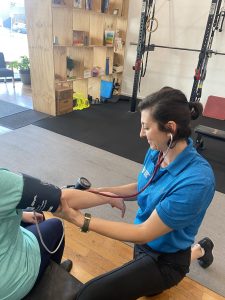As Exercise Physiologists, we routinely track heart rate, oxygen saturation and blood pressure (BP) during testing and training.
One response that deserves special attention is Exaggerated Exercise Blood Pressure (EEBP) — A disproportionate elevation of BP for the level of effort of the exercise being performed.
EEBP is more than a big number on the cuff; it’s an early signal that someone may be on the path toward hypertension or cardiovascular disease, even when their resting BP looks fine.
What exactly is EEBP?
During graded exercise, systolic BP (SBP) should rise progressively and diastolic BP (DBP) should stay about the same or change only slightly.
EEBP describes an abnormally high SBP rise for the work being performed during early exercise.
EEBP is generally defined as an exaggerated increase in systolic blood pressure response (>150) during early cardiovascular exercise at a low to moderate intensity. What is concerning about EEBP is that it is often seen in people who have normal resting blood pressure.
That means you won’t catch it at rest – but it shows up when the cardiovascular system is under stress, like during a treadmill test, a bike protocol, or even during your standard exercise session.
Why should we screen for it? 
Because EEBP predicts future health problems – long before symptoms appear.
1. It’s a predictor of future hypertension
A large 2022 meta-analysis of over 31,000 people showed that those with exaggerated BP responses during exercise were up to twice as likely to develop hypertension, even after accounting for resting BP and other risk factors.
2. It identifies “masked hypertension”
EEBP can uncover what’s known as masked hypertension – high BP that doesn’t show up during a resting clinic reading, but is elevated in everyday life or under stress. This is especially common in people with metabolic risk factors, high stress, or autonomic dysfunction.
3. It’s linked to long-term cardiovascular risk
EEBP has been associated with increased risk of:
- Cardiovascular events
- Left ventricular hypertrophy
- Diastolic dysfunction
- Reduced exercise tolerance
In other words, even in asymptomatic clients, a high BP response to exercise may indicate early heart and vascular strain.
This is where we come in…
As Exercise Physiologists, we have a unique and vital role. Our testing environment allows us to observe how the cardiovascular system behaves under physical stress – something standard GP clinic visits can’t do.
We’re in a prime position to:
✅ Identify exaggerated responses early
✅ Flag potential masked hypertension
✅ Support early intervention with exercise and lifestyle changes
✅ Collaborate with GPs and specialists for further assessment
We often refer to these findings during submaximal testing, exercise capacity assessments, and ongoing monitoring throughout rehabilitation and chronic condition management.
What does the research say about exercise as a solution?
A 2023 network meta-analysis covering over 15,000 participants across 270 randomised trials found that all forms of structured exercise significantly reduce resting BP – and isometric exercise (like wall sits or handgrip training) showed the largest BP-lowering effects.
Other forms like aerobic, resistance, and HIIT training were also highly effective – supporting our multi-modal, tailored approach to exercise prescription.
Bottom line?
EEBP is an early warning sign – and we’re the frontline clinicians who can catch it, treat it and advise your GP/specialists. .
When we identify exaggerated BP responses in our clients, we are potentially preventing the development of hypertension, heart disease, and stroke in your future.
This is preventative medicine at it’s best!
Safe, effective exercise starts with a deep understanding of what’s happening inside the body – even before the symptoms start!
References:
- Cuspidi, C., Sala, C., Tadic, M., Grassi, G., & Mancia, G. (2023). Clinical and prognostic value of exaggerated blood pressure response to exercise. Reviews in Cardiovascular Medicine, 24(3), Article 064. IMR Press
- Esformes, J. I., et al. (2019). Exaggerated systolic hypertensive response to exercise predicts cardiovascular outcomes: Meta-analysis. Polish Archives of Internal Medicine, 129(12), 850–851. Europe PMCMedycyna Praktyczna
- Keller, K., Stelzer, K., Ostad, M. A., & Post, F. (2017). Impact of exaggerated blood pressure response in normotensive individuals on future hypertension and prognosis: Systematic review. Advances in Medical Sciences, 62(2), 317–329. (Summarised in Hypertension Research review.) Nature
- Misovic-Dedinje, D., et al. (2024 print; 2023 online). Targeting hypertensive response to exercise and the association of masked hypertension. American Journal of Hypertension, 37(1), 53–59. Oxford Academic
- Parati, G., et al. (2022). Pathophysiology of the exaggerated blood pressure response to exercise. Hypertension Research, 45, 1811–1823. Nature
- Pierdomenico, S. D., et al. (2023). Masked hypertension and exaggerated blood pressure response to exercise: A review and meta-analysis. Diagnostics, 13(6), 1005. MDPIEurope PMC
- Schultz, M. G., et al. (2013). Exercise-induced hypertension, cardiovascular events, and mortality: Systematic review and meta-analysis. American Journal of Hypertension, 26(3), 357–366. (Earlier foundational meta-analysis.) SEMS-journal
- Edwards, J., et al. (2023). Exercise training and resting blood pressure: A large-scale pairwise and network meta-analysis of randomised controlled trials. British Journal of Sports Medicine, 57(20), 1317–1328. (Full text.) British Journal of Sports Medicine+1
- European Heart Journal Supplement (2020). Exaggerated BP response at mild exertional intensity identifies undiagnosed hypertension. (Conference report noting early-stage thresholds.) Oxford Academic

